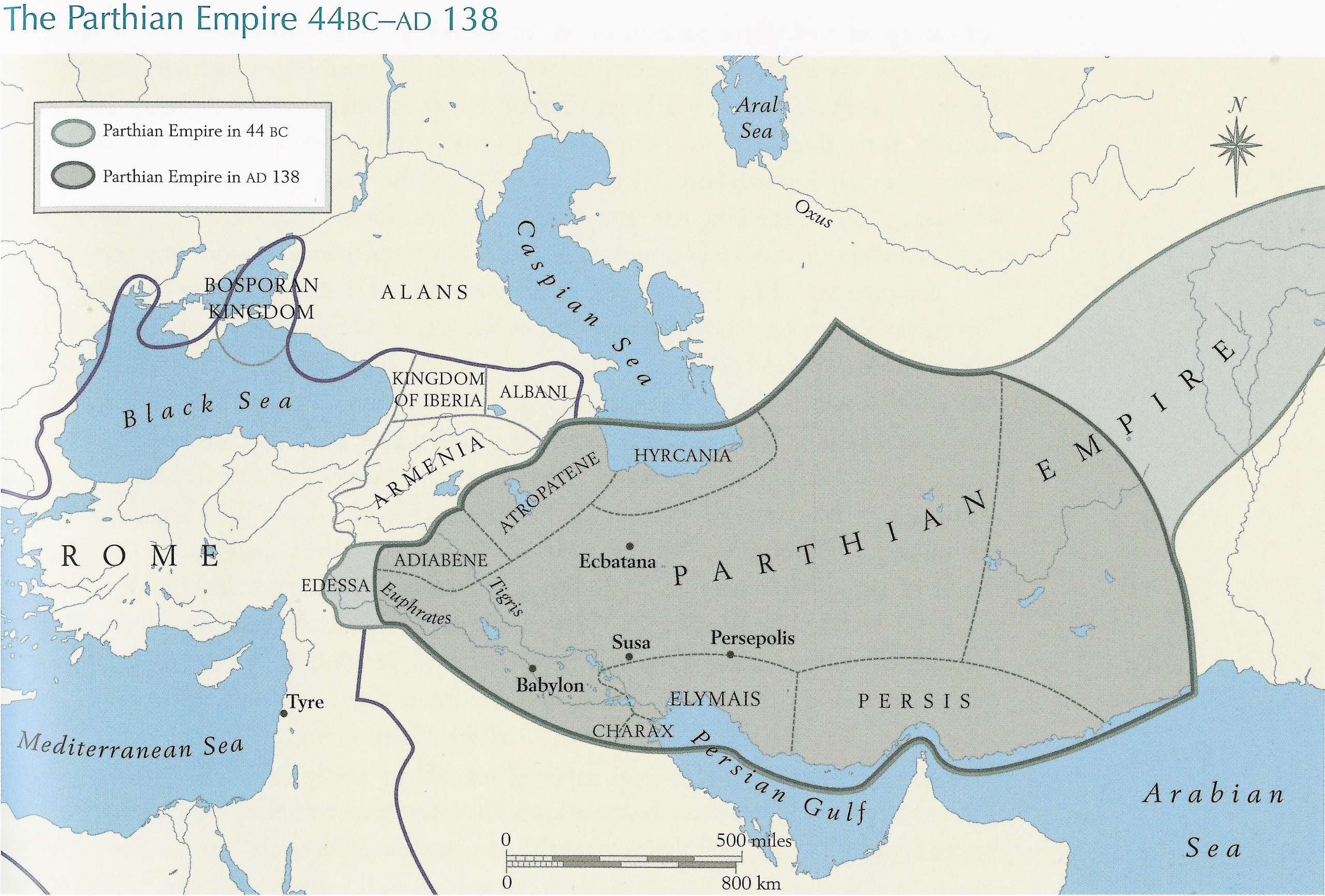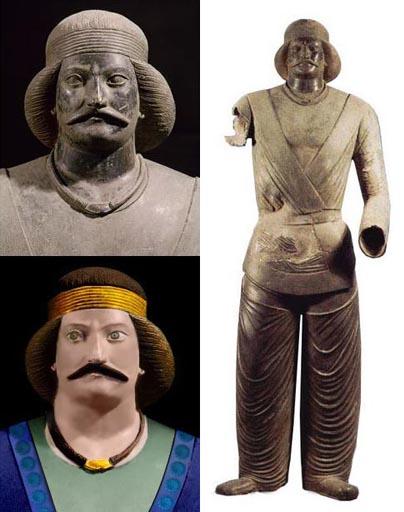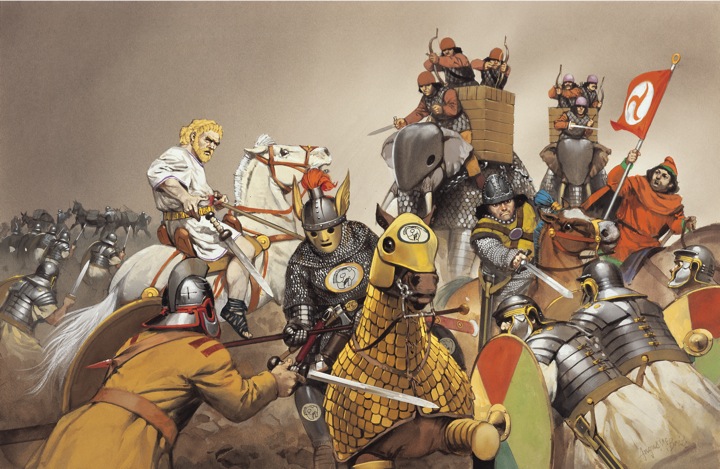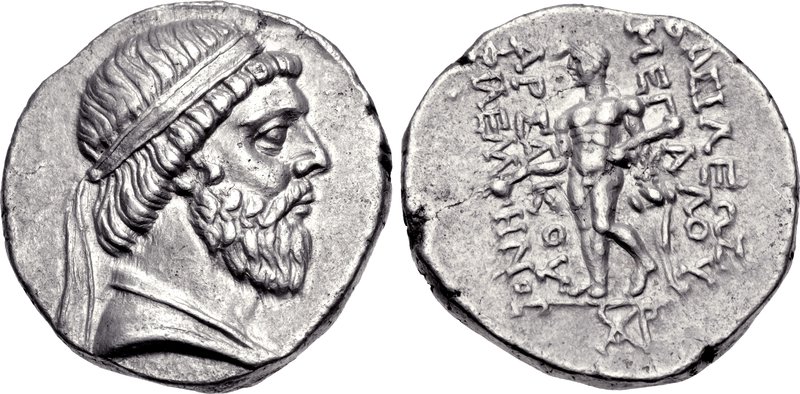Hayden Chakra was published in the About History venue on June 18, 2023.
Kindly note that none of the images, videos and their accompanying captions appear in the original About History venue.
Readers further interested in this domain may also consult:

Origins
While the Parthian Empire began in 247BCE, the Parthian state and its Arsacid bloodline would begin centuries prior. Parthia began as a province of the Achaemenid Empire and had its own level of autonomy as it had satrapy status in the Achaemenid world. In 550 BCE the Persian Revolt began under the leadership of Cyrus ‘The Great’ in an effort to overthrow the Median Empire. The revolt began in 550 and while we don’t have an exact date of when the region to be known as “Parthia” was conquered, we can assume it was in the same or following year. In the following centuries the province would be conquered by Alexander ‘The Great’, but would continue to exist as Alexander inherited the Achaemenid form of administration, The region would later fall under Seleucid rule for roughly 300 years before Parthia is successfully conquered by the Parni tribe.

A reconstruction of the face on the statue of a Parthian-era nobleman housed at Tehran’s Iran Bastan Museum (Picture Source: Parthian Empire).
The origin of the Arsacid Dynasty traces to the Parni/Aparni Tribe of Transoxiana. The Parni were a northern Iranian people known commonly as the “Saka”, and were part of a tribal confederation with the Dahae. The Arsacids invaded and assumed control over Parthia in 238 BCE, deposing the Governor Andragoras, who declared independence from the Seleucid Empire in 247 BCE.
Seleucid-Parthian Wars
Only a year after the Parni Conquest of Parthia, the Seleucids tried to regain the region. While the first attempt under Seleucus II failed, the Seleucid campaign was renewed and in 209 BCE Antiochus III was successful, leaving the Arsacids to plead for Vassal status. While the Arsacids were loyal for a time, the Parthian-Seleucid war would resume when Phraates I invaded Seleucid territory. However, the bulk of the conquest of Seleucid land was under his successor, Mithridates I, as he annexed the region of Media and took the city of Ecbatana in 148/147 BCE. Mithridates I would proceed to conquer Babylon, Seleucia, Susa and Characene, effectively bringing all of Iran and most of Mesopotamia under Parthian rule.
A cinematic animation recreation of the fatal battle between Parthian-Arsacid king Mithradates (Mehrdad) I (r. 167 or 165–132 BCE; also known as Mithradates the Great) and Seleucid king Demetrius II (r.145–138 BCE) in 138 BCE (the video cites the battle as having taken place in 139 BCE) (Source: Aditu Laudis). The Parthians decisively defeated the Seleucid field army and captured Demetrius II. The Seleucids made one final attempt to re-enter Iran under the leadership of Antiochus VII Sidetes (r. 138-129 BCE) but he too was finally defeated at the Battle of Ecbatana (129 BCE) by the Parthian armies led by Arsacid king Phraates (Farhad) II (r. c.132-127 BCE), son of Mithradates I. With these Parthian victories, the legacy of Alexander the Hellenic occupation of Iran had finally come to end.
A multitude of attempts made by the Seleucids to reconquer their former lands ensued. Despite some initial success, the last Seleucid campaign was forced to withdraw from Mesopotamia in order to defend Seleucid territory from Roman and Egyptian aggression. This failed campaign would mark the last Selucid attempt at reconquest, as the Seleucid core territories crumbled under the Ptolemies of Egypt and the Romans. The massive Parthian-Selucid war lasted from 177 BCE, the initial invasion by Phraates I, to the defeat of the Seleucid Empire in 90 BCE, nearly an entire century.
Roman-Parthian Wars
With the fall of the Seleucid Empire naturally came the rise of the Parthian Empire, and the further expansion of the Roman state. With no other major opposition to either power, the Roman-Parthian Wars ensued. The first official military conflict to erupt between the two great powers began in 58 CE, in the first of many conflicts over the vital buffer-state of Armenia. The war was initiated by the Romans under the leadership of Emperor Nero in response to the ascension of a Parthian (Tiridates) to the Armenian throne. In the end, this war over Armenia resulted in Shah Vologases’ elected Parthian ruler holding the Armenian throne, but only with the approval of the Roman emperor.
Video history of The Battle of Carrhae (53 BCE) and the factors leading to this historic battle (Source: Kings and Generals). The Parthian Spad (army) led by General Surena (of the Suren clan) defeated a Roman force (3-4 times larger than the Parthians) led by Marcus Lucinius Crassus.
In 114 CE, Trajan declared war on the Parthian Empire in a bid to either completely eliminate, or more realistically, vassalize the Parthian state. Despite his successful campaign that led him to capture Ctesiphon, Trajan’s endeavors were cut short by rebellion in Roman territory, which he quelled. He died before he could continue his campaign against Parthia. The last war between the two powers came during Caracalla’s reign as Roman Emperor opposing Vologases IV. The war began with Roman success but ended with a relative stalemate leaning towards the Parthians. At this time, Parthia was gripping with a empire-wide disease and the chaos of civil war between Vologases IV and Artabanus V
Fall of the Parthian Empire and Rise of the Sassanian Dynasty
With the empire crumbling under the pressure of disease, civil war and rebellion, the Parthian Empire would later be replaced by the Sassanid Empire. In 224 CE the ‘Battle of Hormozgdan’ ensued with Ardashir I, Governor of Parsis, defeating Artabanus I and establishing the Sassanid Empire. The Sassanian Empire would continue to house the Parthian Royal Clans and gave them positions of power. The Sasanians improved upon siege technology and government centralization, which were the Parthian’s greatest shortcomings. This new Sassanian state would prove far more aggressive and able take the fight to the Romans.

The Parthians created a powerful empire that stood the test of time, lasting a solid 400 years, and being one of the only Empires in history to combat the forces of the Roman Empire. The Parthian state, while having serious errors, managed to field a powerful and situational conscript force, comprised of largely well armed Horse Archers and Cataphracts aided by pockets of footmen. The Parthian Empire obtained its wealth from taxing the Silk Road and plundering Roman Syria. The Parthian Empire arose from the chaos of the Seleucid Empire, founding the first Persian state since the Achaemenid Empire. Parthia’s legacy would continue under the powerful and illustrious Sassanid Empire.




